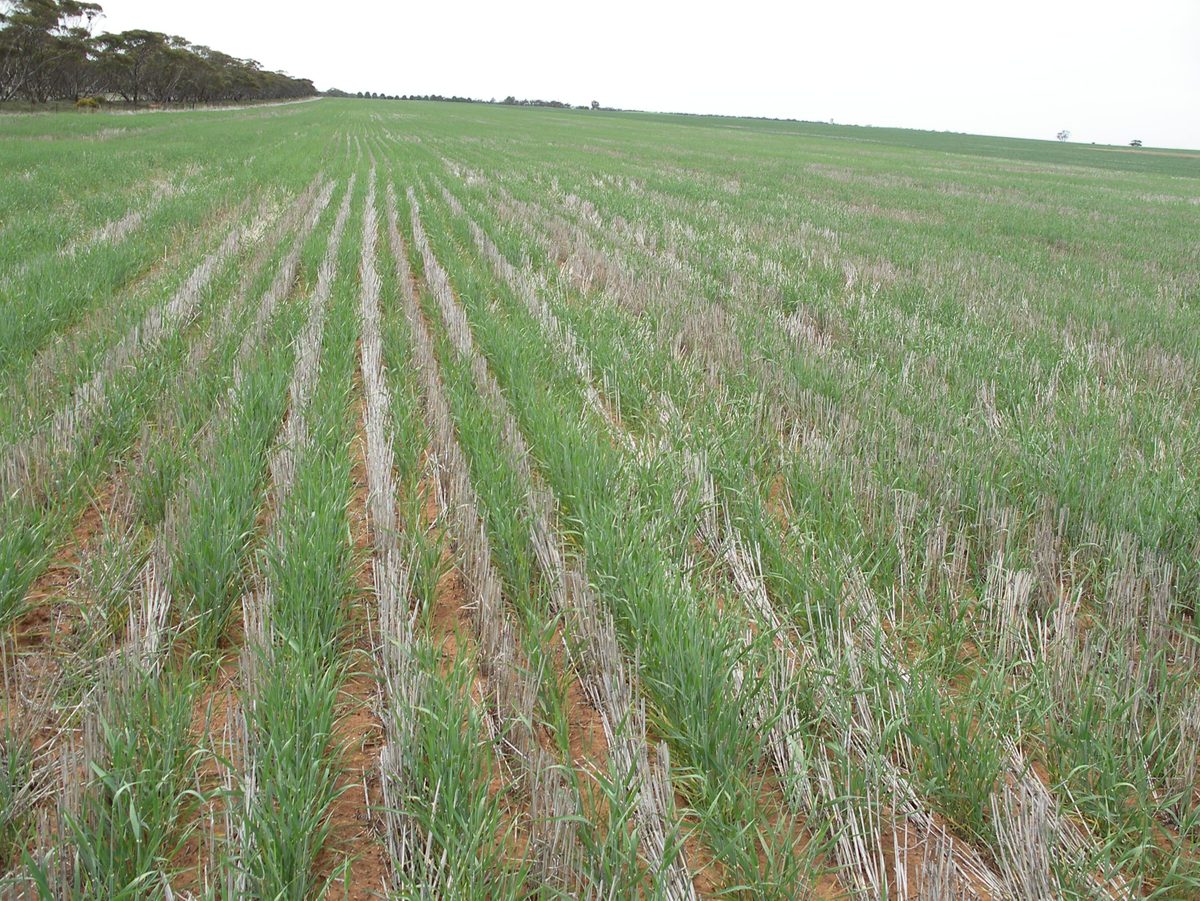Management of soil erosion risk
Soil is predisposed to a risk of erosion by physical disturbance or removal of surface vegetative cover. Very dry seasonal conditions increase the risk of erosion where there is reduced vegetative cover resulting from poor crop and pasture growth.
The critical management practices that affect the risk of soil erosion are:
- The occurrence, intensity and timing of tillage operations
- The quantity and nature of surface cover.
Most of the erosion risk is due to cropping practices such as tillage and stubble burning. Grazing management is also an important factor, especially in dry years, particularly when there are 2 or more successive dry seasons. The highest risks associated with grazing occur in late summer and autumn when feed availability and the cover of annual crop and pasture residues is declining.
The adoption of more sustainable land management practices, such as no-till sowing and stubble retention, has greatly improved the protection of soil from erosion. No-till sowing involves sowing the seed in a narrow slot in the soil to minimise soil disturbance and maximise residue protection on the soil surface.
Water repellent soils can lead to poor plant germination and reduced plant growth, increasing soil erosion risk. Clay spreading, delving and spading to manage water repellent soil is also a significant tool used in the protection of soils from erosion. These soil modification techniques are widely used in the Southern Mallee, Upper South East and parts of Eyre Peninsula, where there are large areas of naturally occurring water repellent soils. These techniques increase the clay content of the surface soil, improving soil strength and resistance to erosion. Seedling emergence and crop and pasture production is also increased, providing higher levels of plant cover to protect the soil from erosion.
Confinement feeding allows stock to be removed from paddocks before surface cover declines below critical protective levels. It is a very important technique for preventing erosion during dry seasonal conditions and in the late summer and autumn period when ground cover is declining.
Future challenges
There are ongoing challenges to further adoption of agricultural land management practices for improved erosion protection, including herbicide resistance in weeds, mice, snails, crop diseases, and a relatively limited range of perennial pasture species that can be grown on erosion prone soils.
Climate change is likely to increase soil erosion risk given that it is expected to deliver a warmer, drier climate with an increase of severe weather events. This will bring many management challenges and further research into adaptive responses to climate change is necessary.
Find out more:
- State Soil Protection Report July 2021
- Assessing Agricultural Land
- Wind Erosion Potential factsheet
- Wind Erosion Potential map
- Water Erosion Potential factsheet
- Water Erosion Potential map
- DEW’s land manager surveys
- Winning back the land
- Climate change adaptation
- Climate change, wheat production and erosion risk
- Emergency Measures to curb wind erosion
- Review of Effect of Fires on Agricultural Soils SA
- Recovering Eroded Land - SA Arid Lands
- MODIS Fractional Cover - Geoglam RAPP website
- Landsat satellite Fractional Cover - VegMachine website
Older reports
- Condition of Agricultural Land in South Australia - executive summary
- Condition of Agricultural Land in South Australia - full report



